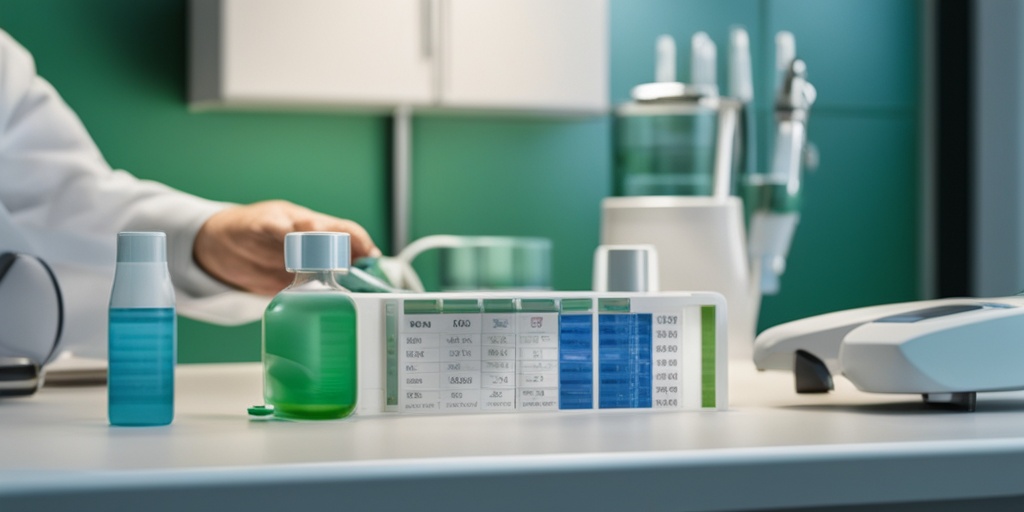What is a Postcoital Test?
A postcoital test, also known as a Sims-Huhner test or postcoital sperm survival test, is a diagnostic tool used to evaluate the interaction between sperm and cervical mucus in individuals trying to conceive. This test is particularly useful for couples experiencing unexplained infertility or those who have been trying to get pregnant for an extended period without success.
How Does a Postcoital Test Work?
The postcoital test is a simple, non-invasive procedure that involves collecting a sample of cervical mucus after intercourse. The test is usually performed during the fertile window, typically around ovulation, when the cervical mucus is most receptive to sperm. The collected sample is then examined under a microscope to assess the number of sperm present, their motility, and their ability to penetrate the cervical mucus.
What Does the Postcoital Test Evaluate?
The postcoital test evaluates several key factors that can affect fertility, including:
- Sperm quality and quantity: The test assesses the number of sperm present in the cervical mucus and their ability to move properly.
- Cervical mucus quality: The test evaluates the consistency and receptivity of the cervical mucus to sperm.
- Sperm-cervical mucus interaction: The test examines how well the sperm interact with the cervical mucus, including their ability to penetrate and survive within the mucus.
Why is a Postcoital Test Performed?
The postcoital test is performed to identify potential fertility issues that may be hindering conception. This test can help diagnose:
Underlying Fertility Issues
The postcoital test can help identify underlying fertility issues, such as:
- Low sperm count or poor sperm quality
- Abnormal cervical mucus
- Inadequate sperm-cervical mucus interaction
By identifying these issues, healthcare providers can develop a personalized treatment plan to address the underlying causes of infertility.
At Yesil Health AI (yesilhealth.com), our team of experts provides evidence-based health answers and resources to help individuals navigate fertility challenges. If you’re struggling with infertility, consult with a healthcare provider or fertility specialist to determine if a postcoital test is right for you. 💊
Remember, understanding the postcoital test and its role in evaluating fertility can empower you to take control of your reproductive health. 💪

How is a Postcoital Test Done?
When it comes to evaluating fertility, the postcoital test (PCT) is a valuable diagnostic tool. But have you ever wondered how this test is actually done? Let’s dive into the details! 🤔
Preparation is Key
Before the test, you’ll need to prepare by abstaining from sexual activity for 2-5 days. This allows for optimal sperm quality and quantity. Your healthcare provider may also recommend that you avoid lubricants, as they can interfere with the test results.
The Test Itself
The postcoital test is typically performed in a healthcare provider’s office or fertility clinic. The test involves collecting a sample of cervical mucus, which is then examined under a microscope. Here’s what happens during the test:
- Your healthcare provider will perform a pelvic exam to collect a sample of cervical mucus.
- The mucus is then placed on a slide and examined under a microscope.
- The sperm are counted and evaluated for their ability to penetrate the cervical mucus.
The entire process usually takes around 30 minutes to an hour. It’s a relatively quick and painless procedure, but it’s essential for understanding your fertility.
What to Expect During a Postcoital Test
Now that you know how the test is done, let’s talk about what you can expect during the process. 🤝
A Quick and Painless Procedure
As mentioned earlier, the postcoital test is a relatively quick procedure. You can expect to spend around 30 minutes to an hour at the healthcare provider’s office or fertility clinic.
Minimal Discomfort
The test itself is painless, but you may experience some mild discomfort during the pelvic exam. This is usually due to the insertion of the speculum, which can cause some pressure or discomfort.
What Happens After the Test?
After the test, your healthcare provider will examine the sample under a microscope and evaluate the results. You may need to wait a few days for the results, depending on the laboratory’s processing time.
Once the results are in, your healthcare provider will discuss them with you and explain what they mean for your fertility. This is an excellent opportunity to ask questions and discuss any concerns you may have.
Remember, the postcoital test is an essential tool for understanding your fertility. By knowing what to expect during the test, you can feel more prepared and empowered to take control of your reproductive health. 💪

Understanding Postcoital Test Results
When it comes to evaluating fertility, one of the most crucial tests is the postcoital test (PCT). This test helps assess the quality of sperm and its ability to penetrate cervical mucus. But what do the results of a postcoital test really mean? In this article, we’ll delve into the world of postcoital test results and explore what they can reveal about your fertility.
What Is a Postcoital Test?
Before we dive into the results, let’s quickly recap what a postcoital test is. A postcoital test, also known as the Sims-Huhner test, is a diagnostic tool used to evaluate the interaction between sperm and cervical mucus. The test is typically performed during the fertile window, usually around ovulation, when the cervical mucus is most receptive to sperm.
How Is a Postcoital Test Performed?
The test involves collecting a sample of cervical mucus after intercourse. The sample is then examined under a microscope to assess the number of sperm present, their motility, and their ability to penetrate the mucus. The test results can provide valuable insights into the fertility of both partners.
What Do Postcoital Test Results Mean?
So, what do the results of a postcoital test really mean? Let’s break it down:
Normal Results
A normal postcoital test result indicates that the sperm are able to penetrate the cervical mucus easily, and there are a sufficient number of motile sperm present. This suggests that the sperm are healthy and able to fertilize an egg. In a normal result, you can expect to see:
- Many motile sperm (>50%)
- Sperm penetrating the cervical mucus
- Adequate sperm concentration (>1 million/mL)
Abnormal Results
An abnormal postcoital test result can indicate fertility issues. This may be due to:
- Low sperm count or poor sperm quality
- Abnormal sperm morphology
- Cervical mucus hostility, where the mucus is not receptive to sperm
- Sperm agglutination, where sperm clump together, reducing fertility
In some cases, an abnormal result may indicate underlying fertility issues, such as:
- Male factor infertility, where the sperm quality or quantity is affected
- Female factor infertility, where the cervical mucus or reproductive tract is affected
- Unexplained infertility, where the cause of infertility is unknown
It’s essential to remember that a postcoital test is just one aspect of fertility evaluation. Your healthcare provider may recommend additional tests to determine the underlying cause of infertility.
By understanding postcoital test results, you can gain valuable insights into your fertility and take the first step towards overcoming any fertility challenges you may be facing. 💕

Postcoital Test and Fertility Issues
When it comes to fertility issues, understanding the postcoital test is crucial. This simple, non-invasive test can provide valuable insights into a couple’s fertility, helping identify potential problems and guiding treatment options. In this article, we’ll delve into the world of postcoital tests, exploring what they entail, how they work, and what they can reveal about fertility.
What is a Postcoital Test?
A postcoital test, also known as the Sims-Huhner test, is a diagnostic tool used to evaluate the interaction between sperm and cervical mucus. The test is typically performed during the fertile window, usually around ovulation, when the cervical mucus is most receptive to sperm. The test involves collecting a sample of cervical mucus after intercourse and examining it under a microscope to assess the sperm’s ability to penetrate and survive in the mucus.
What Does the Postcoital Test Reveal?
The postcoital test provides valuable information about the quality of the cervical mucus and the sperm’s ability to interact with it. The test can help identify issues such as:
- Sperm quality and motility: The test can reveal if the sperm are able to penetrate the cervical mucus and move freely.
- Cervical mucus quality: The test can assess the consistency, quantity, and receptivity of the cervical mucus to sperm.
- Sperm-cervical mucus interaction: The test can identify any issues with the way sperm interact with the cervical mucus, such as agglutination (clumping) or immobilization.
By analyzing these factors, healthcare providers can gain a better understanding of a couple’s fertility and identify potential issues that may be contributing to infertility.
Postcoital Test vs. Other Fertility Tests
While the postcoital test is a valuable diagnostic tool, it’s not the only test used to evaluate fertility. So, how does it compare to other fertility tests?
Postcoital Test vs. Semen Analysis
A semen analysis is a more comprehensive test that evaluates the quality and quantity of sperm in a semen sample. While both tests assess sperm quality, the postcoital test focuses specifically on the interaction between sperm and cervical mucus. A semen analysis, on the other hand, provides a broader picture of sperm health.
Postcoital Test vs. Ovulation Tests
Ovulation tests, such as basal body temperature (BBT) charting or ovulation predictor kits (OPKs), are used to detect ovulation and identify the fertile window. The postcoital test, however, is used to evaluate the quality of the cervical mucus and sperm interaction during this fertile window.
In conclusion, the postcoital test is a unique and valuable diagnostic tool that provides insights into the complex interaction between sperm and cervical mucus. By understanding the postcoital test and its role in fertility evaluation, couples can better navigate the journey to conception. 💕

Frequently Asked Questions about Postcoital Test
What is a Postcoital Test?
A postcoital test, also known as a Sims-Huhner test, is a diagnostic tool used to evaluate the interaction between sperm and cervical mucus in infertile couples. It helps assess the quality of the cervical mucus and the sperm’s ability to penetrate it.
What is the purpose of a Postcoital Test?
The primary purpose of a postcoital test is to evaluate fertility in couples experiencing difficulty conceiving. It helps identify any issues with sperm quality, cervical mucus, or their interaction, which can affect fertility.
How is a Postcoital Test performed?
The test is typically performed during the fertile window of a woman’s menstrual cycle, usually around ovulation. The couple has intercourse, and then the woman visits a healthcare provider within 2-3 hours. The provider collects a sample of cervical mucus and examines it under a microscope to assess the presence and quality of sperm.
What does a Postcoital Test measure?
The test evaluates several factors, including:
- Sperm count and motility (movement) in the cervical mucus
- Sperm morphology (shape and structure)
- Cervical mucus quality and quantity
- The interaction between sperm and cervical mucus
What are the benefits of a Postcoital Test?
The test provides valuable information for couples experiencing infertility, helping to:
- Identify potential fertility issues
- Guide further fertility testing and treatment
- Optimize fertility treatment plans
What are the limitations of a Postcoital Test?
While the test provides valuable insights, it has some limitations:
- It may not detect all fertility issues
- Results can be affected by various factors, such as timing and technique
- It is not a definitive diagnostic tool, but rather a screening test
What is the significance of a Postcoital Test in fertility treatment?
The test plays a crucial role in fertility treatment, as it helps identify potential issues and guides further testing and treatment. It can also help couples make informed decisions about their fertility journey.
Can a Postcoital Test be used for other purposes?
While primarily used for fertility evaluation, the test can also be used to:
- Assess the effectiveness of fertility treatments
- Monitor changes in cervical mucus and sperm quality over time
What are the alternatives to a Postcoital Test?
Other diagnostic tests and tools may be used in conjunction with or instead of a postcoital test, including:
- Semen analysis
- Hormone level testing
- Ultrasound and other imaging tests
What are the next steps after a Postcoital Test?
Based on the test results, the healthcare provider may recommend further testing, treatment, or lifestyle changes to improve fertility. It’s essential to discuss the results and next steps with a healthcare provider.
Conclusion
A postcoital test is a valuable diagnostic tool for evaluating fertility in couples. By understanding the test’s purpose, benefits, and limitations, couples can make informed decisions about their fertility journey.




